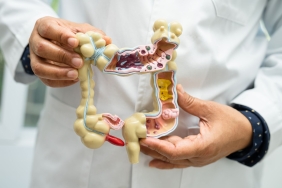6 IMPORTANT SYMPTOMS OF BUERGER'S DISEASE CAUSED BY SMOKING
Buerger's disease, a disease known and proven to be directly caused by smoking in the world, generally stops the blood flow in the leg arteries, causing pain over time. If treatment is delayed, Buerger's disease, which negatively affects the person's quality of life, can cause limb loss. Prof. from Memorial Kayseri Hospital Cardiovascular Surgery Department. Dr. Faruk Cingöz gave information about Buerger's disease and treatment methods.
Also known as pruning disease
Buerger's disease is an occlusive, non-infectious, inflammatory disease that is localized in medium and small-sized vessels, has an unknown cause, progresses with recovery and relapse (episodic), and is seen mostly in young people. Studies have determined that this disease is an immunological vascular inflammation due to abnormalities in the immune system. In medicine, thromboangiitis obliterans is popularly known as 'pruning' (spontaneous amputation) disease. Buerger's disease is a rare disease of the arteries and veins in the arms and legs. In Buerger's disease, also called thromboangiitis obliterans, blood vessels become inflamed, swollen, and can become blocked with blood clots (thrombi). The exact cause of Buerger's disease is unknown. However, tobacco use clearly plays a role in the development of Buerger's disease. It is thought that the chemicals in tobacco irritate the lining of blood vessels, causing them to swell. It is also suspected that some people may have a genetic predisposition to the disease.
If these symptoms occur, no time should be wasted.
- During periods when the disease is active, the relevant vascular area is sensitive and painful.
- The patient has general malaise, weakness, fatigue and fever. There may also be foot sweating that disappears as the first symptom. Coldness and numbness occur in the fingers.
- Sometimes the first symptom is numbness in the feet when walking, rather than loss of sweating. Most of the time, decreased fullness in the veins can be noticeable.
- Over time, lameness in walking may develop. Pain in the calf area is usually a distinguishing feature.
- As the disease progresses, bruising begins on the feet. Afterwards, sores appear on the fingers along with rest pain that increases at night.
- If left untreated, gangrene occurs and the person loses limbs, starting from the fingers and progressing upwards.
Men who smoke are at risk
It is most common among young male smokers between the ages of 25-40. Buerger's disease constitutes % 7-10 of the vascular diseases group in Turkey. The probability of occurrence in women is % 2 of the cases. The most important reason is the excessive sensitivity of the body to the vascular wall triggered by the nicotine metabolite cotinine (the substance that nicotine turns into after entering the body) in smokers. The increase in free oxygen radicals due to high homocysteine levels also sensitizes the vascular walls and can initiate the reaction. In addition, frequent exposure to cold, low socioeconomic status, malnutrition, hepatitis B jaundice, high fibrinogen, and tendency to clot can be counted among the causes.
Diagnosis can be made according to 5 criteria
Clinically, 5 main criteria (shionaya) are essential. The presence of 4 of the following: smoking, age under 50, involvement below the knee, absence of atherosclerosis risk factors and upper extremity involvement are sufficient for diagnosis. Diagnosis is usually made according to the above criteria during arterial examination based on the patient's complaints. After the examination, ultrasonographic and Doppler studies should often be performed to determine the location and degree of obstruction. Tomographic angiography is required for the involvement of the disease in the arterial tree. In this way, the location of the obstruction, the amount of obstruction, its length, the blood flow path to the fingers, and most importantly, the presence of collateral blood vessels are determined. This is very important in treatment. In some cases, classical angiography is requested for both diagnosis and treatment purposes.
Smoking must be stopped for treatment
First of all, smoking should definitely be quit. Since Buerger's disease is considered as an allergy to smoking, quitting allergen, i.e. smoking, is the first and indispensable part of the treatment. Because if the allergen disappears, the disease will also disappear. Approximately % 90% of patients diagnosed with Buerger who quit smoking experience improvement, even if there is a wound on their feet. A sustainable and regular exercise program is mandatory. It should be protected from cold weather and cold trauma as much as possible. In drug treatment, painkillers, vasodilators, clot dissolvers and blockers are used. These drugs must be used continuously and uninterruptedly, never stopped. If there is a wound; In addition to local treatment, ozone, high pressure oxygen, PRP and stem cell applications can be performed. Unfortunately, although daily painkillers partially reduce pain, they are often ineffective. In this case, the specialist physician may prescribe narcotic painkillers or may deem epidural anesthesia, that is, partial anesthesia, necessary. If there is no response to these treatments, the aim is to first open the vessel angiographically. If no results are obtained, open reconstructive vascular surgeries are performed using sympathetic nerves, which narrow the vessels feeding the affected limb. If no response is received to these, unfortunately a decision is made to cut off the relevant area. The disease progresses with recovery and recurrence of the disease, and the process continues as the cut is made over the previously cut area. However, in the majority of patients, clinical stagnation may occur in patients who change and improve their habits towards vascular health, use their medications properly and do not neglect their check-ups, and the person can get rid of bad conditions.
Source: (BYZHA) Beyaz News Agency

















